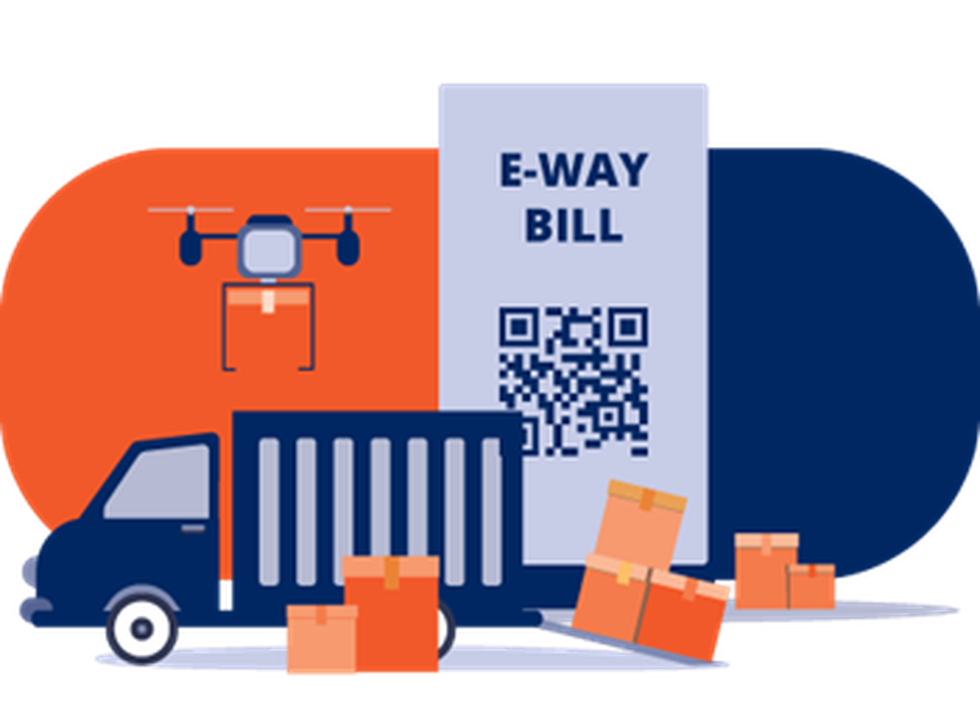
About E-Way Bill:
- An e-way bill, short form for electronic way bill, is a permit needed for inter-state and intra-state transportation of goods worth more than Rs. 50,000.
- It contains details of the goods, the consignor, the recipient and the transporter.
- It can be electronically generated through the Goods and Services Tax Network (GSTN).
- When an eway bill is generated, a unique E-way Bill Number (EBN) is allocated and is available to the supplier, recipient, and the transporter.
- Working:
- E-way bill must be raised before the goods are shipped and should include details of the goods, their consignor, recipient and transporter.
- Though check-posts have been abolished under GST, a consignment can be intercepted at any point for the verification of its E-way bill, for all inter-State and intra-State movement of goods.
- If a consignment is found without an E-way bill, a penalty of ₹10,000 or tax sought to be evaded, whichever is greater, can be levied.
- Coverage:
- The GST e-way bill became mandatory from April 1, 2018 for all inter-state transport of goods valued above Rs 50,000.
- Starting from April 15, 2018, it was made compulsory for the moving goods within a state in a phased manner.
- Validity: The e-way bill’s validity varies depending on the distance that the goods have to travel. Typically, the bill’s validity is one day for every 100 km of movement of goods.
- Goods excluded from e-way bill’s ambit: Perishable items (such as meat, milk and milk products and fruits and vegetables), gold and silver jewellery, cooking gas cylinders, raw silk, wool and handlooms.
- Who should generate an eWay Bill?
- Registered Person: E-Way bill must be generated when there is a movement of goods of more than Rs 50,000 in value to or from a registered person. A Registered person or the transporter may choose to generate and carry EWay bill even if the value of goods is less than Rs 50,000.
- Unregistered Persons: Unregistered persons are also required to generate e-Way Bill. However, where a supply is made by an unregistered person to a registered person, the receiver will have to ensure all the compliances are met as if they were the supplier.
- Transporter: Transporters carrying goods by road, air, rail, etc. also need to generate e-Way Bill if the supplier has not generated an e-Way Bill.
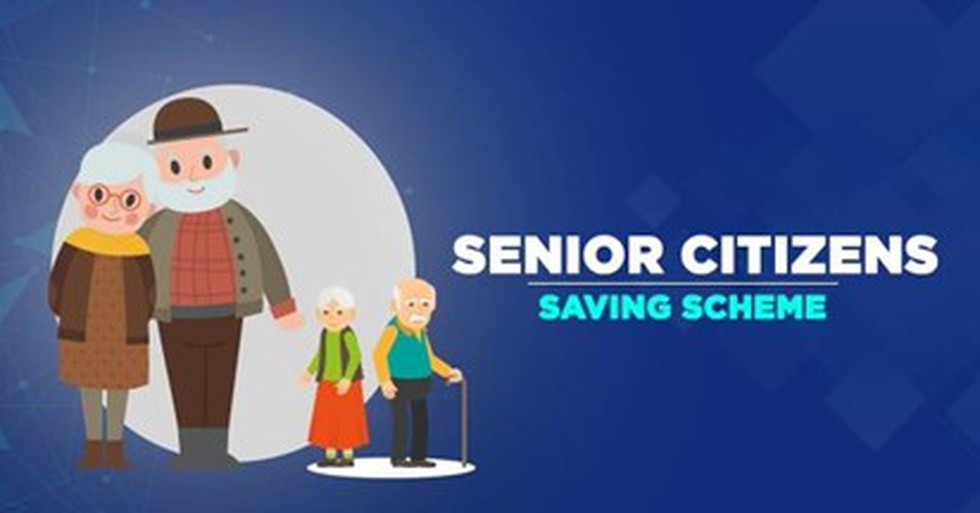
About Senior Citizen Savings Scheme (SCSS):
- SCSS was launched with the main aim of providing senior citizens in India a regular income after they attain the age of 60 years old.
- Who is eligible?
- Indian citizens above the age of 60 years.
- Retirees in the age bracket of 55-60 years who have opted for Voluntary Retirement Scheme (VRS) or Superannuation.
- Retired defence personnel above 50 years and below 60 years of age.
- Maturity: It has a maturity period of five years. But, a depositor can extend one's maturity period for another three years.
- Number of accounts: Individuals are allowed to operate more than one account by themselves or open a joint account with their spouse.
- Deposit Limits: Eligible investors can make a lump sum deposit
- Minimum Deposit– Rs. 1,000 (and in multiples thereof)
- Maximum Deposit– Rs. 30 Lakh.
- Interest Payment: Under SCSS, the interest amount is paid to the account holders quarterly.
- Premature withdrawal: After one year of opening the account, premature withdrawal is allowed.
- Deposits in SCSS qualify for deduction u/s 80-C of Income Tax Act.
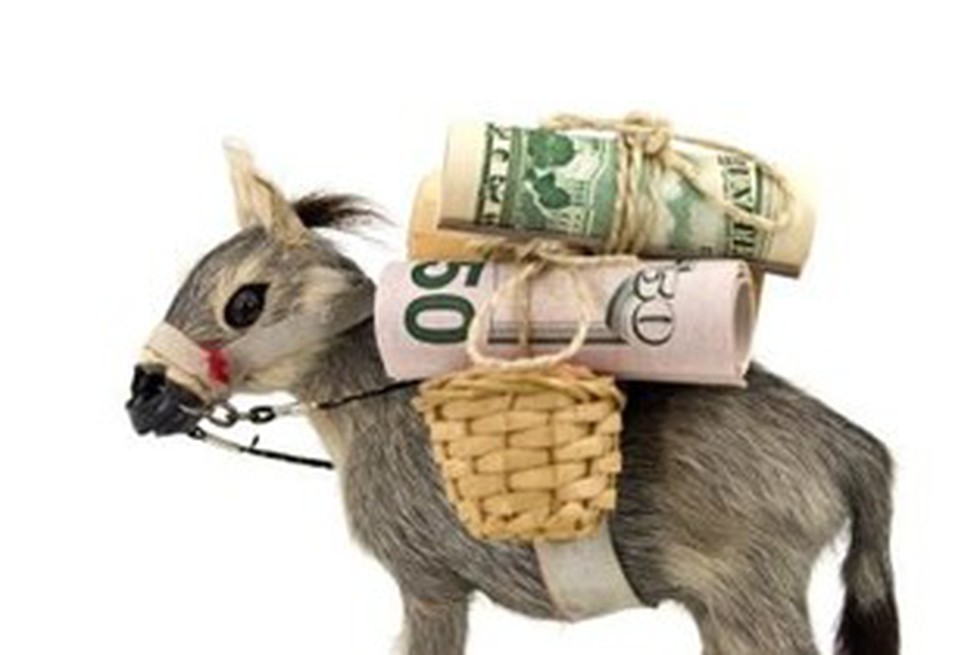
About Money Muling:
- A money mule is someone who transfers or moves illegally acquired money on behalf of someone else.
- Criminals recruit money mules to help launder proceeds derived from online scams and frauds or crimes like human trafficking and drug trafficking.
- Money mules add layers of distance between crime victims and criminals, which makes it harder for law enforcement to accurately trace money trails.
- Money mules can move funds in various ways, including through bank accounts, cashier’s checks, virtual currency, prepaid debit cards, or money service businesses.
- Some money mules know they are supporting criminal enterprises; others are unaware that they are helping criminals’ profit.
- When such frauds are reported, the money mule becomes the target of police investigations.
- Money mules often receive a commission for their service, or they might provide assistance because they believe they have a trusting relationship with the individual who is asking for help.
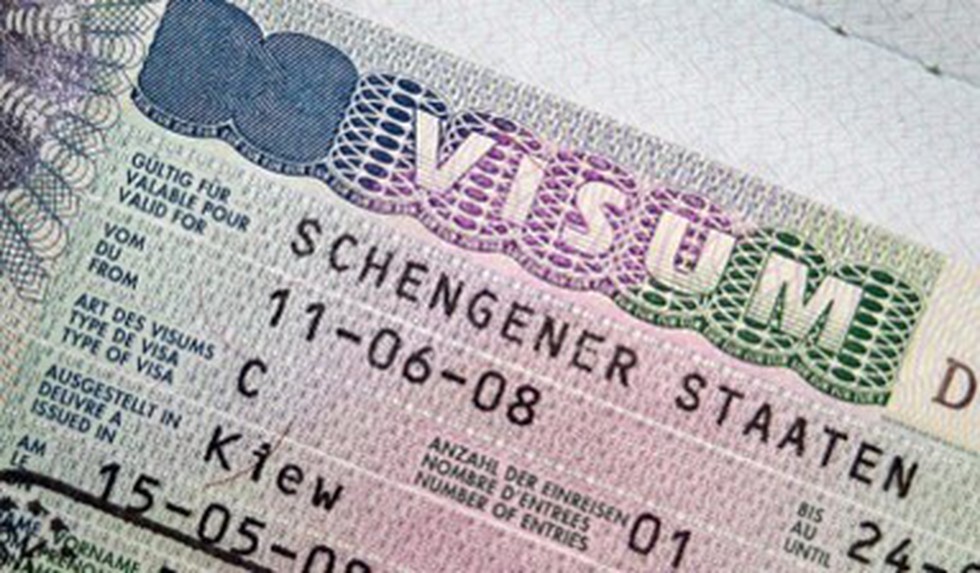
About Schengen Visa:
- It is an official document mandatory for some non-Europeans to travel to all the 27 countries which are part of the Schengen area.
- Once granted, this visa allows the traveller to cross the borders of the other member-states without going through identity checks at the border.
- This type of visa is issued by one of the Schengen States and allows you to visit any of the Schengen countries for a duration of up to 90 days in total within 180 days.
What is the Schengen Area?
- The Schengen Area, or Schengen Countries Zone, is a group of 27 European nations that have abolished their internal borders, for the free and unrestricted movement of people.
- Members of this area include: 23 of the 27 EU member states (except for Bulgaria, Cyprus, Ireland and Romania) and all members of the European Free Trade Association (Iceland, Liechtenstein, Norway and Switzerland).
- Switzerland, Iceland, and Norway are not in the EU but are inside of the Schengen Area.
- Being part of this area means that countries:
- do not carry out checks at their internal borders, except in cases of specific threats;
- carry out harmonized controls at their external borders, based on clearly defined criteria.

About Periscope:
- It is an optical instrument used in land and sea warfare, submarine navigation, and elsewhere to enable an observer to see his surroundings while remaining undercover, behind armor, or submerged.
- Submarines have periscopes so that people inside can see what is on the surface of the water.
- Construction and Working Principle:
- Periscopes can be constructed using a pair of flat mirrors or prisms and a rectangular hollow tube that has a viewing window at the top and bottom of the tube.
- The mirrors within this structure are fixed at an angle of 45o at the two ends of the rectangular hollow.
- A periscope is a useful example of the law of reflection at work. It’s important that your mirrors are placed at a 45° angle, because light always reflects away from a mirror at the same angle that it hits it.
- In a periscope, light from an object strikes the top mirror at 45° and bounces off at the same angle.
- This sends light directly down the tube and onto the lower mirror. This mirror, also at a 45° angle, reflects light directly to your eye.
- A simple periscope only requires mirrors, whereas a more complicated periscope utilizes prisms rather than mirrors.
- The periscopes used in submarine applications are complex, typically requiring the use of tubes that are at least 10 meters in length to achieve a greater range of scope.

About Phosphine:
- Phosphine on Earth is developed naturally by bacteria that live in very low-oxygen environments.
- To produce phosphine, Earth bacteria take up phosphate from minerals or biological material and add hydrogen.
- It is also called as hydrogen phosphide.
- Properties
- It is a colourless, flammable, extremely toxic gas with a disagreeable garlic like odour.
- It is formed by the action of a strong base or hot water on white phosphorus or by the reaction of water with calcium phosphide (Ca3P2).
- It is structurally similar to ammonia(NH3), but phosphine is a much poorer solvent than ammonia and is much less soluble in water.
- Uses of Phosphine
- It is used in semiconductor and plastics industries, in the production of a flame retardant, and as a pesticide in stored grain.
Key facts about Venus
- It is Earth’s closest planetary neighbour.
- Similar in structure but slightly smaller than Earth, it is the second planet from the sun.
- It is wrapped in a thick, toxic atmosphere that traps in heat.
- Its surface temperatures reach a scorching 880 degrees Fahrenheit (471 degrees Celsius).
- It rotates very slowly on its axis – one day on Venus lasts 243 Earth days.
- Unlike the other planets in our solar system, Venus spins clockwise on its axis.

About Salsola Oppositifolia Desfontani:
- It is a species that belongs to the family of Amaranthaceae.
- Features
- It is a perennial shrub that grows in saline, arid to semi-arid environments.
- It is a succulent shrub that can grow one to two metres tall and have a smooth, cylindrical, woody base.
- It is rarely prostrate and unlike other species of Salsola, does not have any hairs.
- As the name oppositifolia suggests, the leaves of this plant grow opposite each other in the stem.
- It is a halophyte plant -a plant adapted to growing in saline conditions.
- This species, earlier known from Italy, Northern Africa, Palestine, Spain and Western Sahara.
- It has been reported for the first time from India based on the collection made from Khadir Bet, Kutch, Gujarat at 15.5-m altitude.
- It is the sixth species of Salsola genus to be discovered in India.
- Five other species of Salsola genus which have been recorded in India are Salsola kali, Salsola hatmanii, Salsola monoptera, Caroxylon imbricatum (Salsola baryosma) and Halogeton glomeratus (Salsola glomerata).
- Plants of the Salsola genus have salty juice stored in their leaves.
- Uses
- Salsola oppositifolia is used as a raw material for manufacturing soda ash.
- Other Salsola species are used in manufacturing lye and soaps.
- Research has established that the species of this genus are rich in pharmacological properties also.

Key Findings:
- It said that 25 countries, including India, successfully halved their global MPI values within 15 years, showing that rapid progress is attainable.
- The report noted that deprivation in all indicators declined in India.
- The poorest States and groups, including children and people in disadvantaged caste groups, had the fastest absolute progress.
- In India those people who are multidimensionally poor and deprived under the nutrition indicator have declined.
- Children under the age of 18 account for half of MPI-poor people (566 million).
- The poverty rate among children is 27.7%, while among adults, it is 13.4%.
- Countries halved their MPI in periods as short as four to 12 years.
Key facts about Global Multidimensional Poverty Index
- It was developed by the United Nations Development Programme (UNDP) and the Oxford Poverty and Human Development Initiative (OPHI).
- It was first launched in 2010.
- It constructs a deprivation profile of each household and person through 10 indicators spanning health, education and standard of living and includes both incidence as well as intensity of poverty.
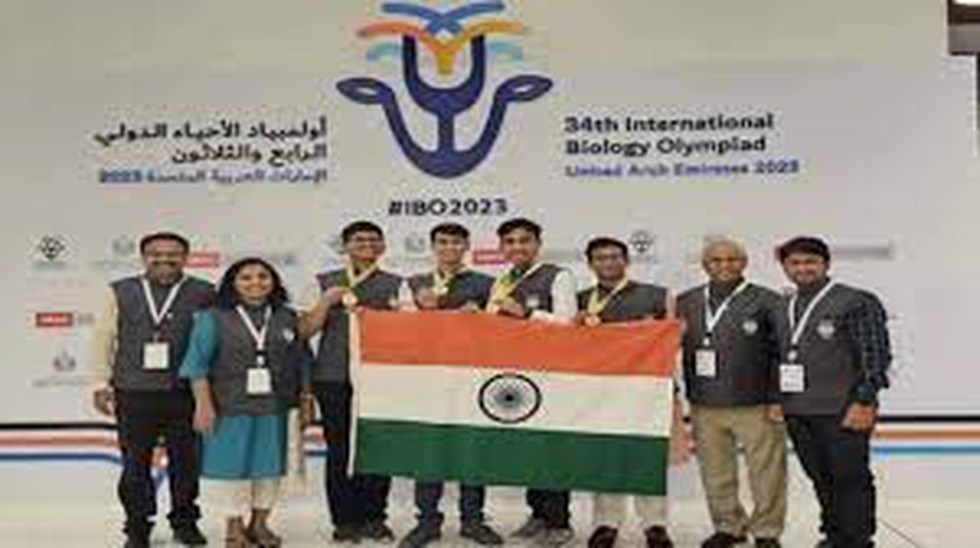
About International Biology Olympiad:
- It is a biological Olympiad for pre-university students under the age 20, and is one of the most well-known International Science Olympiads.
- The first IBO was held in Czechoslovakia in 1990, and it has since been held annually.
- The competition has gradually expanded to include more than 75 participating countries across five continents.
- All participating countries send the four winners of their National Biology Olympiad to the IBO, usually accompanied by two adults who are members of the international jury, for the duration of the competition.
- To select these top four life science contestants for this international competition, all member countries host Biology Olympiad competitions in typically 3-5 consecutively more difficult national competition rounds.
- As a consequence, this leads to a trickle-down effect, engaging more than 1 million students worldwide in life science each year.
- Every year it is being organised by a different country.
- India organized this Olympiad in 2008
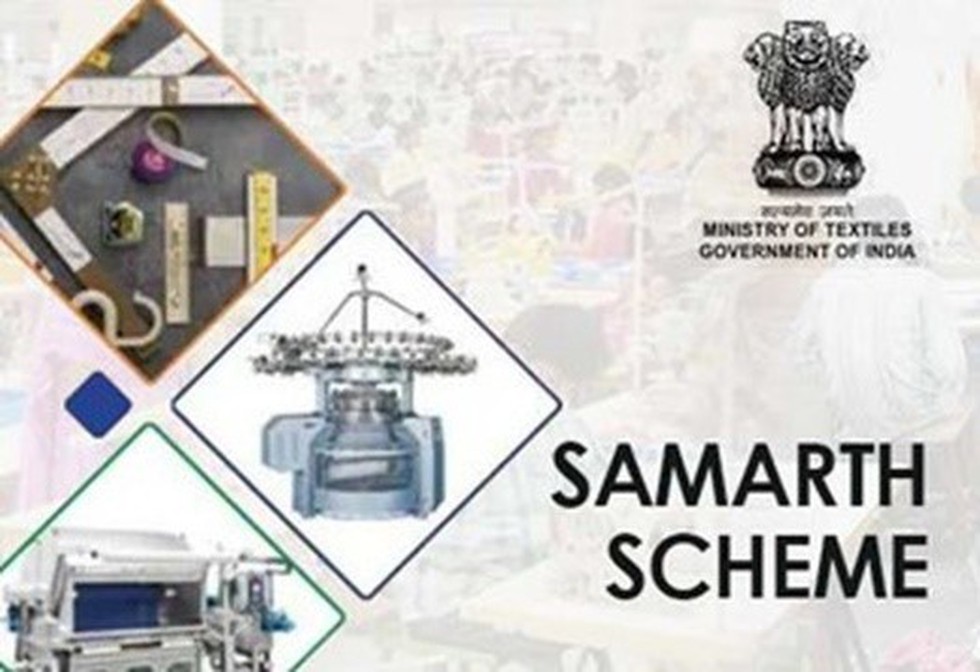
Why in news?
- The Funding pattern has been revised with an increment of 5% in cost norms, which will give much needed additional financial support to industries imparting skill under this Scheme.
Key Facts about SAMARTH scheme
- Scheme for Capacity Building in Textiles Sector (SAMARTH) is a demand-driven and placement-oriented umbrella skilling programme.
- It aims to incentivize and supplement the efforts of the industry in creating jobs in the organized textile and related sectors, covering the entire value chain of textiles, excluding Spinning and Weaving.
- In addition to the entry-level skilling, a special provision for upskilling/ re-skilling programme has also been operationalized under the scheme towards improving the productivity of the existing workers in the Apparel & Garmenting segments.
- The implementation period of the scheme is up to March 2024.
- Nodal Ministry: Ministry of Textiles.
- Under this scheme skilling programme is implemented through the following Implementing Agencies:
- Textile Industry.
- Institutions/Organizations of the Ministry of Textiles/State Governments having training infrastructure and placement tie-ups with the textile industry.
- Reputed training institutions/ NGOs/ Societies/ Trusts/ Organizations/ Companies /Start-Ups / Entrepreneurs active in the textile sector having placement tie-ups with the textile industry.


.png)
.png)

























































































































































.png)
.png)
.png)
.png)
.png)


.png)
.png)
.png)





.png)
.png)






.png)
.png)
.png)
.png)
.png)
.png)
.png)
.png)
.png)

.png)







.png)
.png)


.png)
.png)
.png)


.png)

.png)
.png)





.jpg)

.png)
.png)


.png)

.png)
.png)
.png)

.jpg)

.jpg)


.png)

.png)
.png)
.png)
.png)
.png)
.png)
.png)
.png)
.png)
.png)




.png)

.png)




.png)
.png)
.png)
.png)
.png)
.png)
.png)
.png)
.jpg)
.jpg)

.png)
.png)
.png)
.png)
.png)
.png)
.png)
.png)
.png)
.png)
.png)
.png)
.png)
.png)
.png)
.png)
.png)
.png)
.png)
.png)
.png)
.png)



.png)
.png)

.jpg)
.jpg)


.jpg)
.jpg)
.jpg)
.jpg)
.jpg)

.jpg)








.jpg)
.jpg)
.jpg)
.jpg)
.jpg)

















.jpg)
.jpg)







.jpg)


















.jpg)
.jpg)






























































































.jpg)
.jpg)


























.jpg)

.jpg)










.jpg)








.jpg)




.jpg)










.jpg)


















.jpg)












































.jpg)














.jpg)
.jpg)
.jpg)





.jpg)

.jpg)
.jpg)





































































.jpg)


































.jpg)
.jpg)
















































.jpg)












.jpg)


.jpg)




.jpg)
.jpg)
.jpg)

.jpg)
.jpg)
.jpg)
.jpg)

.jpg)
.jpg)
.jpg)

.jpg)
.jpg)
.jpg)
.jpg)
.jpg)
.jpg)
.jpg)
.jpg)

.jpg)


.jpg)
.jpg)
.jpg)
.jpg)
.jpg)
.jpg)
.jpg)
.jpg)
.jpg)
.jpg)











.jpg)
.jpg)





.jpg)
.jpg)
.jpg)
























.jpg)
























.jpg)









.jpg)
.jpg)







.jpg)
.jpg)









































.jpg)
.jpg)
.jpg)
.jpg)
.jpg)

.jpg)
.jpg)
.jpg)
.jpg)
.jpg)


.jpg)
.jpg)
.jpg)
.jpg)
.jpg)

.jpg)
.jpg)
.jpg)
.jpg)
.jpg)
.jpg)
.jpg)
.jpg)
.jpg)
.jpg)
.png)

.png)
.png)

.png)
.png)
.png)
.png)


.jpg)
.jpg)

.jpg)
.jpg)
.jpg)

.png)
.png)
.png)
.png)
.png)
.png)
.png)

.png)
.png)
.png)
.png)
.png)
.png)
.png)
.png)
.png)
.png)





































































-min.png)



.png)




.png)








































